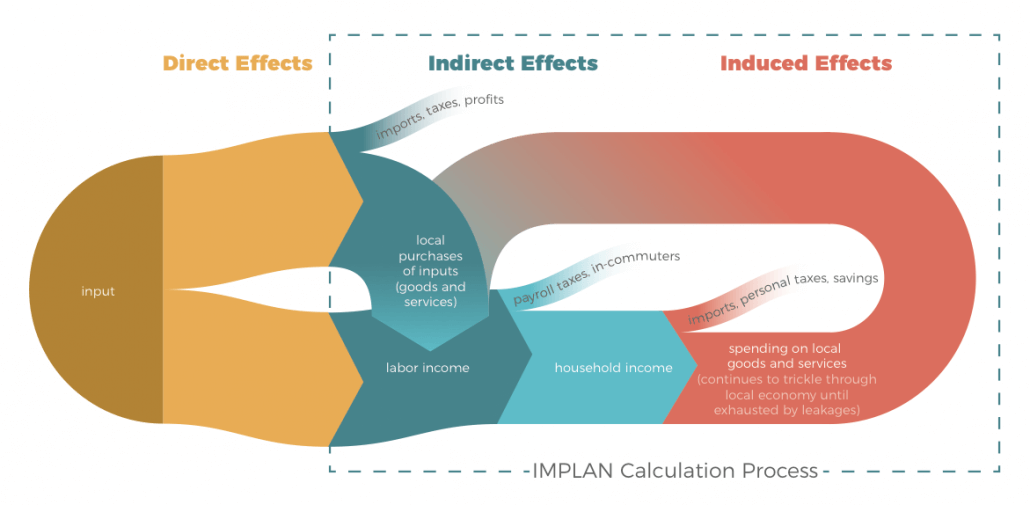Wine Country
The Economic Impact of the Wine and Grape Industry in Canada
Introduction:
In 2013, a cohort of four Canadian wine associations (the Canadian Vintners Association, the Winery & Grower Alliance of Ontario, the British Columbia Wine Institute and the Winery Association of Nova Scotia) commissioned an economic impact analysis to answer one burning question:
How much of an economic impact does the wine and grape industry have on Canada’s national economy?
The results of that analysis, the largest ever research study conducted on the Canadian wine industry, produced a collection of compelling statistics. Perhaps the keynote finding of the study was that in 2011, Canada’s wine industry had an annual economic impact of $6.8 billion dollars. This gripping figure, just one of many, served as striking evidence of the financial significance of the industry on the nation’s overall economic condition.
On the weight of its contributions, Dan Paszkowski, President of the Canadian Vintners Association said, “The research findings reinforce the significant economic value the Canadian wine industry brings to the national economy. The impacts are both direct and indirect, from job creation and tourism to tax generation and agricultural growth, the wine industry benefits multiple business sectors across the entire Canadian economy.”

So, when the same group of four Canadian wine-focused organizations commissioned a follow- up study in 2016, they expected their analysis to reiterate the sector’s economic contributions and to once more demonstrate the importance of the industry to the economy. Instead, what it found was more exciting than they hoped…
The Problem:
The Canadian government has traditionally been generous in their support of domestic winemakers and their efforts. In 2006, Chuck Strahl, the Minister of Agriculture and Agri-Food, announced a nearly $350,000 contribution on behalf of the Canadian Agriculture and Food International (CAFI) Program to support the global market development of Canadian wines. Of the provision, Minister Stahl said, “Canada’s new government is pleased to support our wine industry’s efforts in making Canadian wines more visible and more available in markets around the world. This type of innovative program demonstrates our commitment to the agricultural sector and to Canada’s rural communities.”
Given the early financial and vocal encouragement by the government to raise the profile of Canadian wines in foreign markets, groups throughout the industry suddenly felt an immense pressure to justify that support and provide measurable evidence of the value of their continued operations.
The economic impact analysis commissioned in 2013 successfully showed that neither the industry’s efforts nor the support for it were going to waste. With an estimated annual contribution of $6.8 billion dollars to the national economy in 2011, the industry made an impressive showing and cultivated even greater economic and social backing, both by financial contributors and by an enthusiastic public.
But fast-forwarding nearly 5 years, the question soon became one, not of immediate value, but of sustainability. Is the wine and grape industry still contributing as much as it was years ago? Does the economy still rely as heavily upon it as it did then? Was its boom in economic influence merely temporary?
After having successfully risen to prominence as a pivotal contributor to Canada’s national economic state, the industry faced a new challenge: how to demonstrate that it could remain one.
The Solution:
In 2016, to tackle the issue of promoting itself, not only as an industry of sizeable economic value, but one with indisputable endurance, the same cohort of four wine-promoting organizations (the Canadian Vintners Association, the Winery & Grower Alliance of Ontario, the British Columbia Wine Institute and the Winery Association of Nova Scotia) that commissioned the 2013 study ordered a follow- up study.
The new study was performed by Frank, Rimerman + Co. LLP, a leading international accounting and research firm in the wine industry; the same firm which performed the original study in 2013. The firm openly promotes its long history of meticulous data collection, well-designed research on the wine business and market trends, and the ongoing economic impacts analyses of wine industries on regional economies.
Employing the same methodologies as were used in the original study, but using updated regional economic impact data parsed at a provincial level, the new study offered Canada’s wine and grape industry, the Canadian government, and Canada’s public even greater insight into the economic importance of the industry and how its role might’ve changed over several years.
The Results:
The 2017 study found that in 2015 the Canadian wine and grape industry was, again, a large contributor to the nation’s overall economic output…but what wasn’t expected was how big of contributor it had become.
The study revealed that the economic impact of the wine industry rose from $6.8 billion to $9 billion between 2011 and 2015. This 33% increase served to illustrate not only the economic value of the industry, but its sustainability as a long-term economic contributor and its inarguable potential for continued rapid growth.
On the reported growth, Dan Paszkowski said, “The Canadian wine industry is an increasingly significant contributor to our national economy. Our 671 wineries, largely small, family-owned business, create jobs, pay significant taxes, and boost regional, provincial and national economies alike. He continued, “Every dollar invested in the Canadian wine economy stimulates more jobs, more revenue and more taxes. We contributed $9 billion to the national economy in 2015 or $1 million every hour which is 33% more than in 2011.”
One of the unique benefits of economic impact analyses is that it offers a thorough, and insightful, profile of not only the direct effects of an increase in spending by an industry, but also the subsequent indirect and induced (or “ripple”) effects of that spending as it spills outward into peripheral sectors of the economy.
For instance, some of the key findings of this analysis include:
Furthermore, depending upon the scope of a study, impact analyses can also offer information at sub-regional levels. In this case, the 2017 Canadian wine study was able to report crucial figures concerning portions of the wine and grape industry’s overall impact which are attributable to economic activity in specific provinces.
With the provision of province-specific impacts as part of this study’s overall findings, the authors also encountered an opportunity to explore creative ways in which to report information. This study chose to share some of its more granular figures visually, presenting a series of infographics which contain the separate province-specific impacts.
And on top of it all, growth in support for businesses throughout the industry undoubtedly stimulates economic activity as further increases in production are experienced thanks to newfound interest in the industry’s products and services.
Canadian winemakers experienced an immense strengthening of support from government proponents upon the facts and figures of the 2017 study becoming widespread. Vance Badawey, member of Parliament for Niagara Centre and Co-chair of the Parliamentary Wine Caucus, said, “The wine and grape industry is a Canadian success story. Not only does the sector employ over 37,000 Canadians, but the diversity of the jobs created from this industry is remarkable. Ranging from tourism and retail, to marketing, laboratory research, and farming, this sector welcomes Canadians from a range of backgrounds and talents. Building on the success to date, I look forward to working alongside all industry stakeholders as we continue to grow this exceptional industry.”
Ultimately, the results of the study served as quantifiable, data-driven evidence of the degree to which the wine and grape industry supports both the national economy and a broad network of related industries throughout rural and regional economies, long-term jobs, and market opportunities across the whole of Canada.
The Takeaway:
Challenges like the ones faced by Canada’s wine and grape industry surface every day.
Likewise, solutions are found which resolve them consistently. So, as matters steadily appear, and then disappear, the most valuable thing that nations, businesses, and individuals can gain from observing the strategies of others are “the takeaways”. What can I take away from having heard the story of this group’s experience?
Many organizations struggle to make the value of their efforts known. Be it the public, the government, financial contributors, or others, people often just need to be made aware of how important some groups are. Economic impact analysis can put their significance into numbers for those uninformed.
Many institutes struggle to garner support or favorable public opinion from the communities they serve due to a mistaken belief that these groups are merely faceless organizations. Economic impact analysis can create and share narratives with those indifferent or apathetic. It can help illustrate the humanities pervading organizations’ work and assist in fostering healthy relationships between groups fighting for communities’ causes and their collective members.
So, in this case, the takeaway is simply that economic impact analysis is an invaluable tool that organizations of all sizes, locations, causes, and influences should be adopting. And they should be doing so right now.











